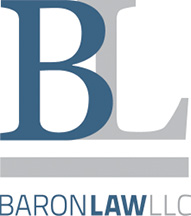Sponsored
New Changes to IRS Stimulus Provides Business Owners up to $33,000 per Employee
by Dan A. Baron, Baron Law LLC
Congress has recently enacted yet another stimulus to help business owners who have been affected by the pandemic. The IRS’s new bill, known as the Employer Retention Credit (“ERC”), might be the most prodigious and influential stimulus that business owners will see in their lifetime. This bill became law by way of the Coronavirus Aid, Relief and Economic Security Act (CARES Act). What began as a short-term COVID tax-relief program is now bigger, more generous and more inclusive than ever as it provides up to $33,000 per w-2 employee.
What is the ERC?
Fundamentally, the ERC is a tax credit for employers who kept w-2 employees on payroll during the pandemic. Employers can use it immediately, reducing the money they’ve spent on payroll taxes for the years 2020 and 2021. Whatever money is in excess of payroll taxes is theirs to keep. Unlike the well-known PPP, the ERC credit is not a loan. The credit is also fully refundable, meaning if the refunds on the employer’s taxes don’t cover the total, an advance payment will be made from the IRS.
How much can employers receive?
In short, most business owners receive the bulk of their stimulus money for the year 2021. The credit amount for 2020 is equal to 50% of qualified wages paid to employees after March 12 and before January 1, 2021. Wages up to $10,000 (including certain healthcare costs) can be counted for each employee. Thus, the credit will be worth roughly $5,000 per working employee per quarter (beginning March 12) in 2020.
Congress’s recent changes for 2021 sweetens the pot. It allows a refundable tax credit against the employer share of Social Security payments equal to 70% of the qualified wages. This credit is against the same $10,000 in wages, meaning it can be worth $7,000 per employee for all quarters in 2021, or $28,000 per-employee. If the credit provided to the employer is greater than the payroll taxes paid, the employer can keep the remainder.
Who is eligible for the ERC/TCTDR?
Employers who benefit from the ERC must have operated a trade or business between March 12, 2020 and June 30, 2021. There are two methods of qualifying. Most business owners qualify under the second prong:
- A decline in gross receipts in a calendar quarter in 2021 where the gross receipts of that calendar quarter are less than 80% of the gross receipts in the same calendar quarter in 2019 will qualify the business (to be eligible based on a decline in gross receipts in 2020 the gross receipts were required to be less than 50%).
- The “full or partial suspension of the operation of the… trade or business” during the pandemic period (March 12, 2020-June 30, 2021).
Most business owners fail to realize that they can qualify under the second prong. For example, the following may qualify a business:
- Decrease in meals and entertainment
- Decrease in travel
- Government orders that reduced group meetings
- Increased technology costs
- Impacted operations
- Reduction in trade shows and conferences
- Supply-chain management issues
An astute application combining all or a portion of the above may qualify a business for the credit.
What if a business received the PPP?
As of 2021 (but retro to March 27, 2020), employers who participated in the Paycheck Protection Program (PPP) loans are now able to claim the ERC for qualified wages that are not treated as payroll costs in obtaining forgiveness of the PPP loan.
How do employers claim the ERC?
Employers report their total qualified wages and health insurance costs as normal via their quarterly employment tax returns (Form 941). The credit is taken against the employer’s share of Social Security tax, but if the credit is larger than the tax amount, the government will refund the difference.
Employers are entitled to withhold a corresponding sum from regular employment taxes, in anticipation of the credit. This included federal tax withholding, employees’ share of Social Security and Medicare taxes. Employers can also request an advance on the credit by submitting IRS Form 7200 if they have less than 500 employees.
How can Baron Law LLC help you?
We will work directly with the IRS to submit your application. Most importantly, we will help formulate your reasons for qualifying under the second prong of a partial suspension in operations. Our services for this particular matter are 100% contingent. We won’t be compensated unless you receive the credit. To learn more, contact Dan Baron at Baron Law at 216-573-3723 or dan@baronlawcleveland.com.

Sponsored By:
Baron Law LLC
Crowne Centre, Suite #600
5005 Rockside Road
Independence, Ohio 44131
216-573-3723
www.baronlawcleveland.com
Opinions and claims expressed above are those of the author and do not necessarily reflect those of ScripType Publishing.

